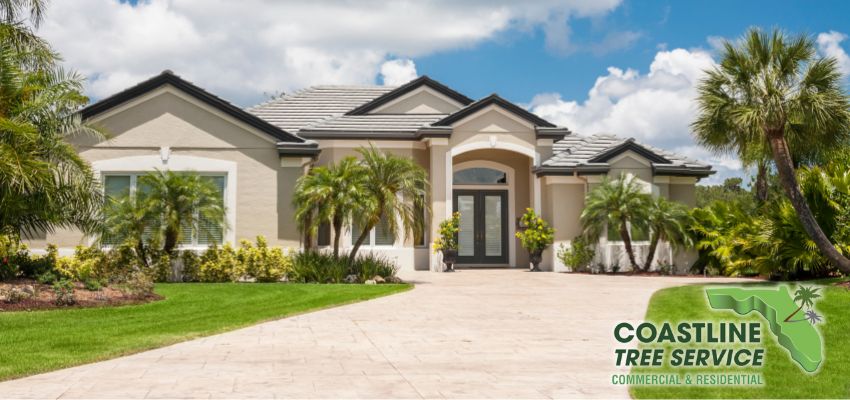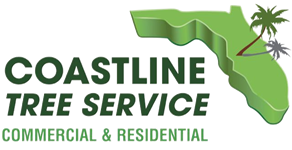
A SW Florida HOA’s Guide To Palm Tree Maintenance
Palm trees are an iconic symbol of Florida’s tropical environment. They grace the landscape with their distinctive silhouettes, providing shade and adding to the state’s unique beauty. However, like all living things, these trees require careful management and maintenance to ensure their healthy growth and longevity. In this comprehensive guide, we delve into the intricacies of palm tree management in Florida, touching upon aspects such as species selection, planting techniques, and maintenance guidelines that encompass fertilization, mulching, disease control, pest prevention, and pruning.
1. Palm Tree Selection
The first step towards effective palm tree management is selecting the right species. This choice depends on multiple factors, including available space, sun exposure, soil conditions, and cold hardiness. In Florida, a variety of palm species thrive due to the state’s conducive climate. Some popular choices are the Sabal Palm, Queen Palm, Coconut Palm, and Date Palm. Each species has its own unique requirements and characteristics, making expert advice vital for making an informed decision. Professionals specializing in palm tree care can provide valuable insights and recommendations based on your specific environmental conditions.
2. Planting Techniques
Once you’ve chosen the right palm species, it’s time to focus on proper planting techniques. These play a crucial role in ensuring the long-term health and stability of your palm trees. Timing is a critical aspect of planting; for palms dug from a field where root disturbance can be severe, the ideal time to transplant is at the beginning of the warm season (early to late spring depending on location). On the other hand, container-grown palms can be planted virtually year-round as their roots are usually not disturbed.
When planting, dig a hole wide and deep enough to accommodate the root ball. The hole should be about 18 inches (46cm) wider than the root ball, and deep enough so that when the root ball is placed in the hole, the point where the roots emerge from the trunk is about even with the surrounding soil surface or grade. It’s essential to ensure that the tree is planted at the same depth as it was in the nursery container.
Backfill the hole with amended soil, ensuring you avoid air pockets. After planting, water thoroughly to promote root establishment. The goal is to keep the original root ball, backfill, and surrounding site soil evenly moist – not too wet and not too dry. For cooler areas, water 1-2 times a week for 3 months after planting. For warmer climates or during the dry season, increase watering frequency to 3-4 times a week until the palm becomes established or adequate natural rainfall is available.
3. Palm Tree Maintenance Guidelines
Proper maintenance is key to promoting healthy growth and preventing disease in palm trees. This involves several steps:
a. Fertilizing
Palm trees may require regular fertilization to maintain optimal growth and vitality. Depending on the site and species, fertilization can be used to compensate for nutrient deficiencies, such as nitrogen, potassium, and magnesium. Use a slow-release palm fertilizer with a balanced nutrient profile, applying it according to package instructions. Over-fertilization should be avoided as it can lead to nutrient imbalances or burn the roots.
b. Mulching
Applying a layer of organic mulch around the base of the palm tree provides numerous benefits. Mulch helps retain moisture, suppress weed growth, and moderate soil temperature. It also helps protect the tree from damage from lawn care equipment, conserves water, and improves soil structure and condition. However, avoid piling mulch against the trunk, as it can create a breeding ground for pests and cause rot.
c. Disease and Pest Management
Palm trees in Florida are susceptible to various diseases and pests. Common diseases include Fusarium Wilt, Ganoderma Butt Rot, and Lethal Yellowing. Regular inspections of the palm tree for any signs of disease, such as discoloration or wilting fronds, can help catch issues early. If any potential problems are identified, an arborist can diagnose the issue and recommend appropriate treatment.
d. Pruning
Regular pruning is essential for maintaining the health and aesthetics of palm trees. Dead or dying fronds should be removed to prevent them from becoming a breeding ground for pests or diseases. Excessive pruning should be avoided as it can weaken the tree and make it more susceptible to wind damage.
4. Seeking Professional Tree Services Help
Palm tree management requires expertise and experience, which is where our professional tree service experts come in. Here at Coastline Tree Service, we can provide a range of services, including tree trimming, tree removal, tree pruning, and tree stump removal. Not only do our tree service experts take care of the trees themselves, but we also ensure the safety of your property.
We have the equipment, man power, and on staff expertise (certified arborists & tree experts) to handle all of your tree service management needs
We proudly serve and offer palm tree maintenance services in Naples, Marco Island, Bonita Springs, Estero, Fort Myers, Fort Myers Beach, North Fort Myers, Cape Coral, Sanibel & Punta Gorda.
Contact us today to schedule your tree inspection at: (239) 895-3230 or contact us online at: https://www.coastlinetree.com/contact-us/
